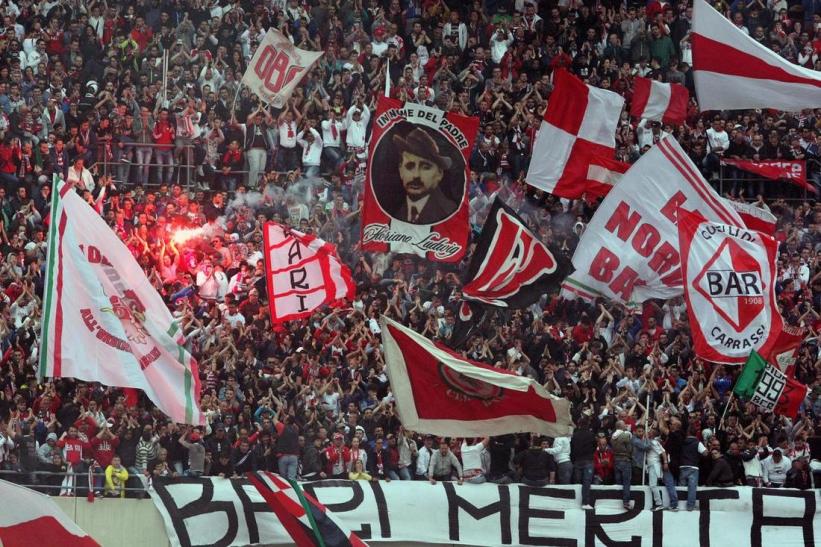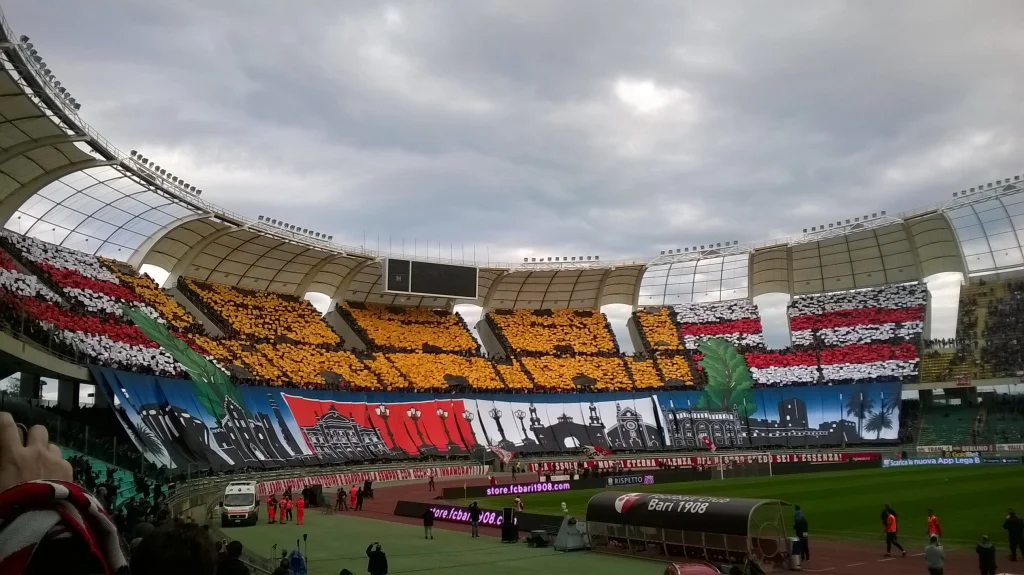While Juventus and Real Madrid finessed the details of Cristiano Ronaldo’s €340m-valued transfer, a distant funeral bell tolled for three historic Italian clubs – a scenario that accentuated the disparity between those at the top and those a few rungs down the Italian football ladder.
Ronaldo’s arrival was hailed as a coup for Italian football: it would raise the profile of Serie A to a level not seen since the 1990s and everyone would reap the benefits. But there are few outside of Turin who subscribe to this ‘trickle-down’ theory.
The fact that FC Bari 1908 and AC Cesena of Serie B, as well as AC Reggiana of Serie C, were all denied licences for the upcoming season and now face bankruptcy will hardly come as a surprise to those who follow Italian football. In the last five years, 26 Serie C clubs have gone out of business and in the last 15 years, 146 clubs failed to register for the new season including the likes of Fiorentina, Napoli and Parma.
In most cases, it’s not the end for these clubs: new legal entities are formed, new owners are found and the clubs can begin again from the lower leagues. But this resurrection process can be long and painful for fans.
For others, the rise from the ashes can come quicker than expected. A recent example being Parma who completed their comeback to the top flight in 2018 just three seasons after the third rebirth in their history.
For Bari and Cesena, however, this is a new experience. The former were founded in 1908, the latter in 1940. That’s 188 years of football history signed away with a stroke of a pen.
But how did it come to this? A glimpse into the Bari situation offers a good account of the complexities involved.
In May 2014, after nearly 30 years in the hands of the Matarrese family, Bari found new owners with former referee Gianluca Paparesta the public face of investors who spent €4.6m saving the club via a bankruptcy auction.
The Matarreses effectively washed their hands of the club in 2011 when they, and the rest of the board of directors, resigned, leaving the club to stagnate. When they finally relinquished control three years later, debts of €30m had been amassed.
Paparesta looked to put the club on an even keel, searching for investors, and in 2016 he appeared to have found one. Noordin Ahmad, a Malaysian businessman, had a preliminary agreement to purchase 50% shares of the club, while local tycoon Cosmo Giancaspro, who acquired five percent of the shares in December 2015, was announced as the new President.
The whole setup appeared little more than a coup, with Giancaspro eventually securing Paparesta’s stake to become majority shareholder while Noordin disappeared into thin air. From then on, the atmosphere around the club changed. Redevelopment plans for the San Nicola stadium were rejected, with Bari’s Mayor Antonio Decaro refusing to commit a cent of taxpayers’ money. Instead, a long-term lease was offered which gave the club freedom to alter the ground. However, with no funds available the plans were shelved, leaving the San Nicola to quietly crumble, poignantly reflecting the situation behind the scenes.
By January 2018, rumours surfaced of wages not being paid, prompting fines from the tax office. In March, it was confirmed the club was €16m in debt and with no assets to raise funds, promotion was their only hope. After reaching the play-offs, a two-point penalty for financial irregularities cost them home advantage against Cittadella and they failed to progress.
In June, the stadium’s water supply was cut due to an unpaid bill of €6,000. At the same time, it was announced that the club had three weeks to raise the €5m registration fee required to compete in the coming season. Talks with Leeds United owner Andrea Radrizzani collapsed and Giancaspro, now under investigation for financial irregularities, walked away from the club.

Bari: The Alternative Club Guide
Life outside of the top flight has always been a strain for Bari. Their architecturally acclaimed stadium (known as the ‘Spaceship’) was originally built for the 1990 World Cup and had long been a drain on resources, with neither the club nor council able to find a sustainable solution. For Bari, this meant the playing squad always came second. Balancing this with their need for sustained top flight football proved an impossible task.
It’s a similar tale across the peninsula as clubs struggle to maintain municipal stadiums they never fill. Even Juventus, who had the Stadio delle Alpi thrust upon them after Italia 90, could not fill the arena and eventually replaced it with the smaller and more cost-effective Juventus Stadium. This week, Cesena fans have talked of battling the Mayor and council as well as the opposition.
On top of the stadium issue, a change of brand image, a revolving door of coaches and players, and a hike in ticket prices during the Giancasparo era, left Bari fans drained of enthusiasm. The club that attracted 50,000 to the Serie B playoff against Latina in 2014, could only sell 20,000 tickets for the 2016 playoff against Novara while league attendances also dwindled.
Now, after 110 years, the club of Gordon Cowans and David Platt has gone. The ‘Old Star of the South’ has been extinguished.
Yet this will hopefully not be the end. Revival plans began immediately as mayor Antonio Decaro spoke in front of 4,000 fans at the club’s old ground, the Stadio della Vittoria, where they will likely return. Decaro wants the football authorities to give Bari a place in Serie C in light of their sporting heritage, but that idea is unlikely to fly.
He also presented a list of potential investors to fan groups, wary of the need for transparency throughout the process. Interested parties include a foreign entrepreneur with a love of Puglia and three others with links to football, one local to the area.
Jeremy Bowling, a season ticket holder since 2009, described the feeling in the region: “The city, the province and the Tifosi are devastated – us Brits too, who were taken in and welcomed almost as novelty mascots and interviewed on local TV. I am not sure how I am going to fill the void.” He concluded, “A city that can send 50,000 to a playoff game and produce the magnificent choreography of the Foggia derby deserved better stewardship than this.”
Mark Neale, who has been following the club for 35 years, was also left stunned: “To convey my true feelings is difficult. As the deadline passed everything was silent, then fans on Facebook were doing live videos with tears in their eyes. Parents, who had taken their children to the stadium as they had been taken by theirs, full of emotion, voices cracking as they held back tears, had this man crying.”
Bari and Cesena will draw inspiration from the likes of Napoli and Fiorentina who have risen again after suffering similar fates, while Reggiana will try to avoid the mistakes made since they were last re-founded in 2005.
As lifelong Bari fan Alfred Ricci put it: “110 years of red and white history has failed, the cockerel (the club’s symbol) has failed.” He continued, “When you kill the rooster, when you cut off his head, he lives on for a while. Bari never dies. The people of Bari never die. The sandwich of raw octopus with focaccia and Peroni never dies. The resurrection will start again from Serie D. We will be there with our scarves, singing, honouring today, yesterday and forever the white and red colours.”
There may be new names, new stadiums, new opposition and new owners but the fans remain constant. No amount of accounting, investigating and legal reporting can take away the passion of those who will continue to give life to a club, even after the obituaries have been written.
Words by Neil Morris: @nmorris01
With special thanks to Mark Neale, Jeremy Bowling and Alfred Ricci.

